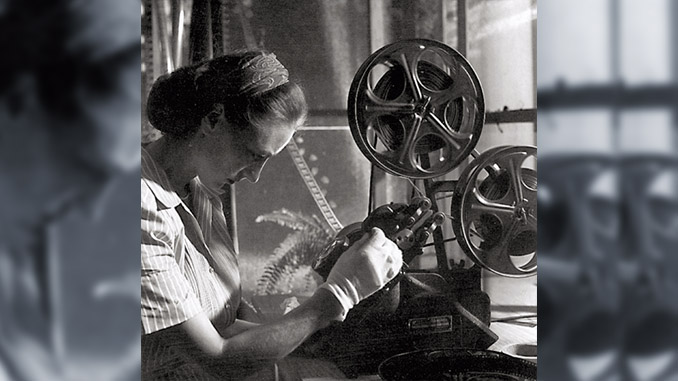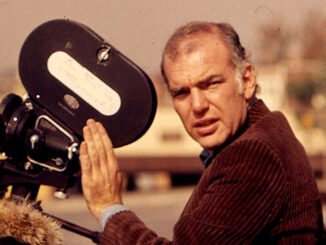
Van Dongen’s Dutch Touch
It was quite a shock to read about Helen van Dongen’s death (“The Grande Dame of Documentary,” Editors Guild Magazine, JAN-FEB 07). For quite some time, I have tried to find out Helen’s whereabouts and no one seemed to know if she was alive or dead––including the film people at MOMA!
Many years ago, Helen trained me as her assistant editor on Power and the Land (1940). Some of those moments are still painfully vivid: a note left on my table, written in Dutch! “Go into the vault and bring back the trim of ‘X’ shot, and don’t come out without it,” the note said in translation. The fact that I didn’t understand the language didn’t deter her.
We had adjoining rooms in a rooming house and my nightly job during the hot weeks of summer in Washington, DC was to massage her very boney back. She was small, thin and fierce. I’ve always been grateful for the tough training Helen gave me, because I learned a tremendous amount from her about editing, discipline and relationships in the cutting room.
Helen also offered tender moments when Joris Ivens, the director of Power and the Land, had one of his occasional asthma attacks, holding onto each side of a door as he heaved. She knew exactly how to handle the situation with delicacy and quiet efficiency. They were very much a couple at that time.
All that was many years ago, but it has stayed in my memory as vividly as if it were yesterday. I am delighted that you published such an interesting story about
“Helen had a sharp tongue but was affectionate to us and her friends.” – Craig Gilborn
Helen because the role of editors is always pretty obscure. Luckily, we truly enjoy our work despite that fact.
Lora Hays, Editor (retired)
Betsy McLane’s appreciation of Helen van Dongen was well done. My wife and I knew Helen after she had left her film career to marry Kenneth Durant. We met the summer of 1972 at her home in Jamaica, Vermont, to see about Kenneth’s work on a book about the Adirondack guide boat. He died two to three months later, so she put his papers in order and gave them to the library at the Adirondack Museum. Then she turned to the manuscript, which she––with a good deal of help from my wife Alice––had co-authored with her late husband.
We remained in touch ever since; more recently, in the last eight years or so, by taking her to lunch several times a year at a restaurant in Brattleboro, Vermont, near the assisted living home where she stayed. The last visit was in the spring of last year. I was about to arrange another visit when I learned of her death in August.
Helen had a sharp tongue but was affectionate to us and her friends. She always dressed smartly and lost little astuteness, save for our last two meetings when she had difficulty recalling names and was hard to understand––as she readily admitted. She spoke critically of her Catholic upbringing and her controlling father, which she said contributed to her leaving home.
Helen made needlepoint covers for three cushions to keep herself occupied when she was in her 90s, following no ready-made design but making up the pattern as she progressed. All were abstract, non-representational and colorful––reminiscent of Kandinsky and signifying a talent one might expect of a much younger artist.
Craig Gilborn
Mt. Tabor, Vermont
“The fact that I didn’t understand the language didn’t deter [Helen van Dongen]” – Lora Hays
Footsteps for the Maestro
I read with interest the fine article by Kevin Lewis about Blow-Up (“This Month in Film History,” Editors Guild Magazine, NOV-DEC 06). I was working at the MGM sound department in those days and (with many others) had just finished editing sound effects for Grand Prix, for which Gordon Daniel, our chief, won a well-deserved Academy Award.
I was assigned by the department to do some footsteps for an Italian film that had been brought into MGM to finish. At our first screening, I met Maestro Antonioni. He spoke some English and described his desires for the sound design of the famous tennis scene. In those days, MGM was set up to record almost any sound that was needed by the editors. The Foley stage was becoming popular and we editors got to supervise our own recording sessions.
The sound in the quiet Foley stage didn’t suit Antonioni, but we foley’d the scene as cut, shuffling our feet around on the stage floor in synch with the picture. I spent the next few hours cutting the steps to the film and adding some background from a park loop. We did a temp mix and showed it to the director. None of us understood Italian, which is good, because he seemed upset and did not at all like our footsteps. He finally went outside to the driveway and scuffed his feet on the cement drive to indicate that that was closer to his vision.
Over the next week, we recorded and cut steps of leather soles on cement…rubber soles on cement…rubber soles on asphalt…and, finally, bare feet and feet with socks on hardwood. I synched ‘em all and we ran them for the boss. I’ll let you guess which one we used.
It was a pleasure to work with the greats, and I have very fond memories of our days and nights on Washington Boulevard in Culver City. Now I am retired and living in North Carolina after a few years teaching at the North Carolina School of the Arts.
Robert E. Collins, Assistant Editor (retired)




